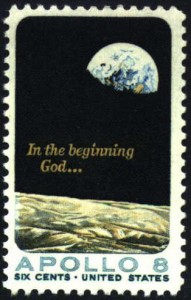 What was Jacob’s Ladder doing on a Communist stamp? Wasn’t Yugoslavia one of those eastern European nations sharing the Soviet Union’s hostility to the Bible? Yet there lies Jacob, sleeping below a group of four angels making their way up and down the rungs.
What was Jacob’s Ladder doing on a Communist stamp? Wasn’t Yugoslavia one of those eastern European nations sharing the Soviet Union’s hostility to the Bible? Yet there lies Jacob, sleeping below a group of four angels making their way up and down the rungs.
This 1970 stamp, issued deep in the Cold War, was part of a series on the history of Yugoslav art. It and hundreds of other biblically-connected stamps appear in a 1974 book by Jewish scholar, Ord Matek, a book which underscores the way in which Judeo-Christian Scripture is woven into the cultural fabric of the West.
As a Jewish writer, Matek focuses on the Torah, the books of “law,” but he also ranges into “the prophets” and “the writings.” Of course, many of his examples come from Israel, who, in 1955, issued a separate stamp for each of the Twelve Tribes, and in 1962, issued a Rosh Hashanah stamp with a child and snake at play (Isaiah 11:8). Also predictable are biblical themes on Vatican stamps, such as Elijah’s ascent to heaven and Noah’s dove with an olive leaf—both from 1938. But Muslim nations joined in too, showing regard for such Old Testament (and Koranic) figures as Adam and Eve (Ajman of the UAE) and Solomon (Yemen)—both in 1968.
Many of stamps employ and honor the work of great artists. For instance, Rembrandt shows up in Oman (Jeremiah Lamenting the Destruction of Jerusalem); Romania (Haman Imploring Queen Esther); and Grenada (Belshazzar’s Feast). And Michelangelo’s Sistine Chapel work is well represented: Togo (Fall and Expulsion); Italy (Jeremiah); and Paraguay (Moses). Joining them in the ranks are such distinguished artists as Delacroix (France’s Jacob Wrestling with the Angel); Velasquez (Columbia’s The Gathering and Eating of Manna); and Rodin (the Maldive Islands’ Eve).
And so on the phenomenon ranged around the world:
1. United States, 1969: The Apollo 8 commemorative stamp showed the earth from space and bore the opening words of the Bible in Genesis 1:1, “In the beginning God . . .”
2. Trinidad and Tobago, 1970: Genesis 9:16 is the theme, with Noah’s Ark upon the waters, hills jutting out from the water, a dove in the sky, and a rainbow overarching.
3. Brazil, 1959: The nation selected an image of the burning bush in Exodus 3:2 to commemorate the centennial of Presbyterian mission work in that nation.
4. Belgium, 1893: These stamps had optional tear-off segments, reading “Do Not Deliver on Sunday,” in Flemish and French. This honored Fourth Commandment sensitivities.
5. New Zealand, 1968: To mark the centenary of the publication of the Bible in the Maori language, the stamp featured a page from that Bible, with the words from Deuteronomy 1.
6. Russia, 1960; Hungary, 1962; and the United Nations, 1967: All three draw on Isaiah 2:4 and Micah 4:3, “They shall beat their swords into plowshares . . .”
7. Australia, 1957: This Christmas stamp pictured the prophet Samuel as a boy at prayer.
Thus it was a half-century and more ago, and it makes one wonder how far the world has fallen into biblical amnesia over the intervening years. It certainly bears study and fresh advocacy as opportunities for such cultural witness present themselves within and among the nations of the earth.